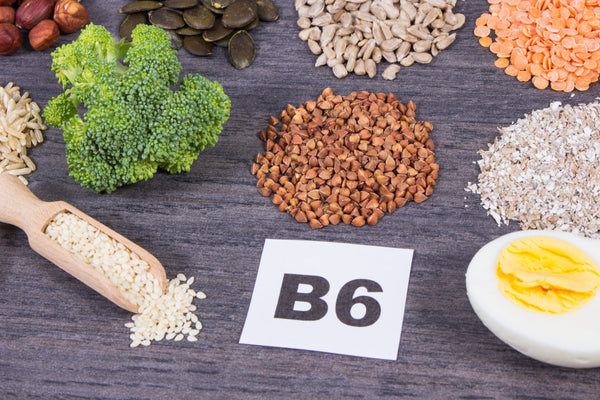
These Symptoms of Low Blood Sugar (Hypoglycemia) In Children

Hypoglycemia or Low Blood Sugar in children is a state of having blood glucose levels that are too low to fuel the body's cells effectively.
Read: 8 Ways to Overcome Low Blood Pressure in Pregnant Women, Take Vitamins, and Exercise!
Glucose, which comes from carbohydrates that are in the diet, is the main source of energy for all cells of the body and, especially, the brain.
While the body is quite good at extracting glucose from the foods we eat, it relies on a hormone called insulin to actually get glucose inside the cells of certain organs: liver, fat, and muscle.
We can think of insulin as holding the "key" to the cell. Without insulin, glucose simply remains in the blood, or we can call it "blood sugar." During an episode of hypoglycemia, there is not enough glucose in the blood. The normal range is about 70 to 150 mg/dl (milligrams of glucose per deciliter of blood).
Hypoglycemia most often occurs in newborns. In older children, this is most commonly seen as a complication of insulin therapy for diabetes but can sometimes have other causes as well.
In the vast majority of cases, Low Blood Sugar In Children is temporary, easy to treat, and usually has no serious problems. There are some rare disorders in which hypoglycemia is recurrent and potentially life-threatening. However, diagnosing it on time and proper treatment, can effectively avoid it.
Low Blood Sugar In Children: What Are The Symptoms Of Hypoglycemia?
The following are the most common symptoms of hypoglycemia. However, each child may experience different symptoms. Symptoms may include:
- Palpitations (heart beating fast, palpitations or palpitations)
- Shakiness
- Dizzy
- Perspire
- Famine
- Headache
- Irritability
- Pale skin color
- Sudden mood swings or behaviors, such as crying for no apparent reason
- Awkward movements or jerks
- Difficulty paying attention, or confusion
- Loss of consciousness
- Arrest
However, babies and young children with hypoglycemia may be asymptomatic.
What Causes Hypoglycemia?
Hypoglycemia or Low Blood Sugar in Children is the result of an imbalance between how much glucose is in the blood and how much glucose the body uses and needs. When we wake up and eat, the main supply of glucose is what we eat and drink.
However, the body has several mechanisms (fasting mechanisms) to ensure that a constant supply of glucose is available to brain metabolism during overnight fasting periods. When this mechanism fails, a child can become hypoglycemic.
Hormones that control the activation of this system tightly control the amounts of glucose in the body. Insulin is the hormone that is most crucial for controlling blood sugar. Hyperglycemia results from insufficient insulin production (as in diabetes), and vice versa, from excessive insulin production, which results in low blood sugar levels (hypoglycemia).
Growth hormone and cortisol are other hormones that control glucose levels. By producing and storing glucose, the liver also contributes significantly to the maintenance of normal blood glucose.
In children, the most common medical condition that causes hypoglycemia is hyperinsulinism (HI). In hyperinsulinism, pancreatic beta cells secrete too much insulin, which leads to hypoglycemia.
There are several causes of HI, including maternal diabetes, fetal stress before or during labor, or genetic defects. Insulinoma is a tumor of the pancreas that secretes insulin, which also causes hypoglycemia.
Other causes of hypoglycemia in children include growth hormone and/or cortisol deficiency, and genetic defects in the liver that affect its ability to release glucose.
Hypoglycemia can also be a consequence of surgery that alters the gastrointestinal pathway (the food pathway from mouth to elimination), such as an operation to prevent reflux called fundoplication.
In these cases, low blood sugar develops after surgery. What distinguishes this type of hypoglycemia is that low blood sugar occurs shortly after eating than during fasting. This form of hypoglycemia is well known as postprandial hypoglycemia or late dumping syndrome.
In addition, hypoglycemia can also occur as a result of accidental or intentional consumption, taking certain medications, or consuming alcohol.
How To Find Out About Low Blood Sugar In A Child (Hypoglycemia)?
In addition to a complete medical history and physical examination, certain blood tests must be performed to diagnose hypoglycemia.
For those who have symptoms of hypoglycemia and do not have diabetes, the underlying disorder is diagnosed with:
- Measures blood glucose and other metabolic fuels such as lactate, ketones, and hormone levels when a child experiences symptoms.
- Some patients with hypoglycemia must be hospitalized to undergo supervised fasting studies to reproduce episodes of low blood sugar and to safely collect the necessary blood tests.
What Is The Treatment For Hypoglycemia?
Immediate treatment for hypoglycemia is to have the child eat sugar-containing foods/liquids or give infusion fluids. The specific treatment for hypoglycemia depends on the specific cause of hypoglycemia and will be determined by your pediatrician based on:
- Age, general health, and medical history of your child
- Extent of interference
- Your child's tolerance to certain medications, procedures, or therapies
- Hope for a disruptive journey
- Your opinion or preference
For children with hypoglycemia conditions, the goal of treatment is to maintain safe blood glucose levels. It involves testing blood glucose as often as possible, learning to recognize upcoming symptoms, and treating the condition quickly, based on instructions given by your pediatrician.
To treat low blood glucose immediately, your child should eat or drink something that contains sugar, such as orange juice, milk, cake icing, glucose gel, or glucose tablets.






